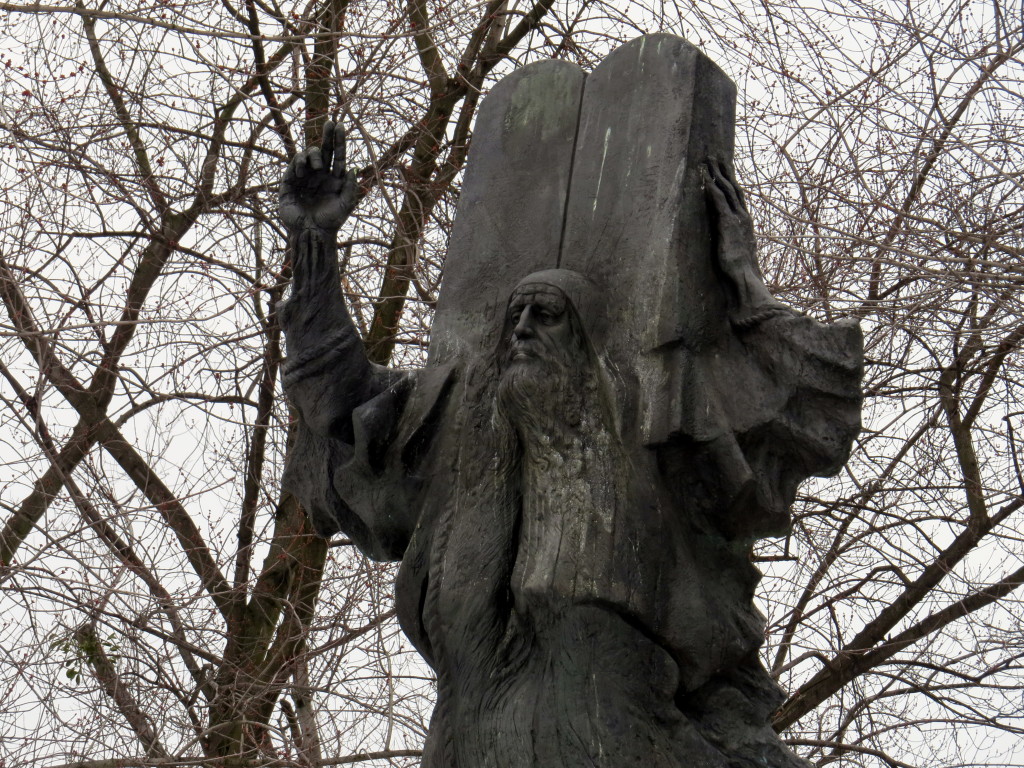Parashat Ki Tissa/Shabbat Parah
Exodus 30:11-34:35
At the top of Mount Sinai, God’s ongoing explication of the establishment of a sanctuary – a Tent of Meeting for Israel and God – is interrupted by the collapse of faith of the Israelite people. Losing hope that their leader, Moses, would return to them, in panic and despair they create an idol, the Golden Calf. God becomes furious at this betrayal and sends Moses away, down the mountain.
The next scene in the story is famous: Moses, when he sees the people dancing around the idol, becomes furious, himself, and he smashes the two tablets he has been carrying, the tablets containing God’s revelation of the Ten Commandments.
But let us back up a second and consider a point often overlooked – how did it come about that Moses was carrying the Ten Commandments at all? If God had decided to reject Israel and had sent Moses back down the mountain, why hadn’t God withheld the tablets from Moses? The answer seems to be that this is part of the ongoing process of forgiveness that God underwent as God struggled with responding to Israel’s unfaithfulness. God had given the tablets to Moses (Ex. 31:18) and, after Moses intercedes with God to forgive Israel (Ex. 32:11-17) God backs down and allows Moses to descend the mountain with the tablets in hand. (32:18)
In this light, the smashing of the tablets is especially shocking. If God had decided to give this gift in full cognizance of the failings of the people, how could Moses destroy them, and thereby destroy a palpable symbol of God’s forbearance?
Perhaps Moses felt that his destructive act was necessary as shock therapy for the people of Israel. He had been privy to the intense confrontation he had engaged in with God at the moment of Divine wrath and frustration with us. He had experienced God’s compassionate response to Moses’ pleas for mercy. He knew that the tablets were, in a real sense, not the same tablets that God had originally planned to bestow on the people. The tablets had been transformed by undergoing the threat of revocation and then God’s subsequent recommitment to hand them over to Israel. Moses knew all this. But Israel did not.
Moses understood that the Israelites’ need for a Golden Calf was just one example of their need for concrete symbols to mediate between themselves and the Divine realm, to literally solidify their relationship with God. So he understood that these tablets could not fulfill the function of materially showing that God is capable of overcoming justified wrath at human beings for the sake of building a future with us. Moses smashed these tablets so as to compel our God of Mercy to accommodate our need for a more tangible version of those tablets. It was a gamble, but one founded on faith. And God agreed, this time summoning Moses to be a partner in creating the second set of tablets. (Ex. 34:1)
Perhaps this helps us understand why it is specifically when Moses came down a second time from Mount Sinai, with this second set of tablets, that his face was beaming. (Ex, 34:29) This time he had collaborated with God to forge a symbol of God’s commitment, despite our failures and shortcomings, to a shared shining future. He had done well.
Shabbat Shalom,
Rabbi David Greenstein
![]()
Subscribe to Rabbi Greenstein’s weekly d’var Torah
“Statue of Moses and the Ten Commandments – Lodz Park – Łódź, Poland” by David Berkowitz is licensed under CC BY 2.0
- Toby Stein: In Memoriam - Thu, Feb 8, 2024
- Faithfulness and Hope: Parashat Sh’lach - Thu, Jun 23, 2022
- Past Their Prime: Parashat B’ha`a lot’kha - Thu, Jun 16, 2022


And what a wonderful collaboration it became – between God and Moses. Now, in present day, whenever we collaborate, we are engaging in an experience of working together for a better world. In this way, all of our faces can ‘shine like Moses’.